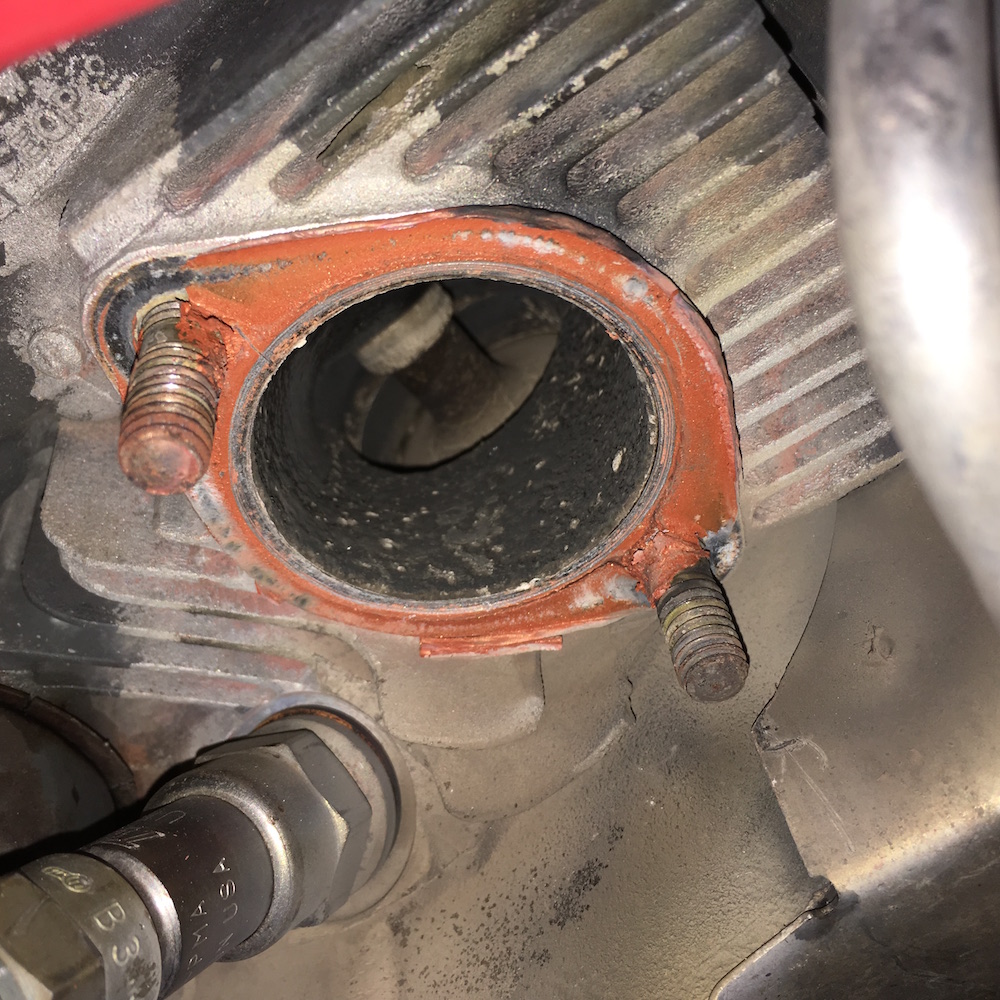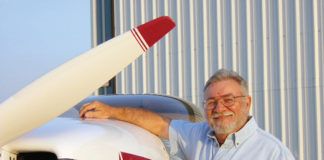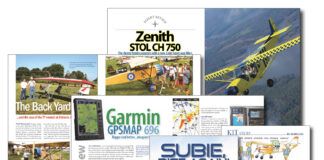It is always amazing to me how many people simply make things up when working on airplanes. Either they don’t know the right way to do something because they have never looked it up (or been properly taught), or they feel that they simply know better than the guys who built whatever they are working on – and the results are often at the least annoying, and at worst, dangerous. Take, for example, this exhaust flange on my wife’s Lycoming engine.
Her 25-year-old exhaust system has given up the ghost, and we are replacing it with a brand new cross-over system from Vetterman Exhausts. We haven’t had the exhaust system off since she purchased the airplane, so it came as a surprise when I took off the bolts and the exhaust didn’t want to simply fall off due to gravity. It seems that some previous mechanic or owner decided that if you use gasket material on car engines to install exhaust manifolds, maybe you should do it on an airplane as well!
Well….that’s not how its done. The blow-proof exhaust gaskets that almost everyone uses (this airplane included) are designed to seal just fine without any sort of additional sealant – they seal metal-to-metal, and when torqued properly, give no problems. Adding high-temp red silicone, as was done here, does nothing but burn up the silicone that is exposed to the 1400+ degree exhaust gases and possibly create space for the gases to circulate on the sealing face, creating local erosion. That leads to cylinder machining, or scrapping.
Then, of course, there is the time-consuming task of cleaning the gunk off so that the next mechanic (in this case…me) can properly install the new gaskets and exhaust.
You can look this stuff up – you use no sealant with all-metal blow-proof gaskets. If you don’t know how to do something with an airplane, just stop and find out what you ned to know. Remember – if your car quits, you coast over to the side of the road. If your airplane engine quits – things can get a lot more exciting.














